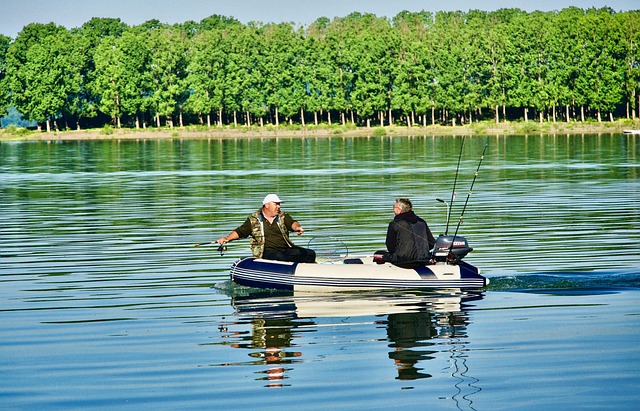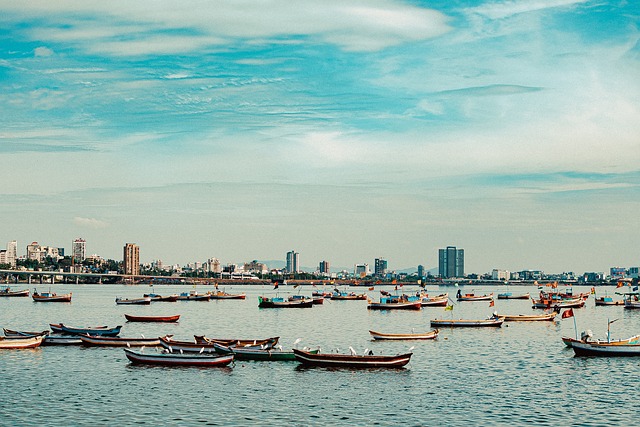When it comes to night fishing and boating, having a reliable flashlight is not just convenient but also essential for safety and success. Look for a high-quality flashlight designed specifically for these activities, with features such as adjustable brightness, durability, waterproofing, impact resistance, and long battery life. LED technology is preferable due to its longevity and efficiency. Regular maintenance, including cleaning the lens, checking and lubricating seals, and ensuring batteries are fresh and stored properly, will keep your flashlight in top condition. This maintenance ensures that when you need it most, your flashlight will provide clear visibility and help attract fish or guide you safely through the night on the water.
When the sun sets, the night transforms into a prime fishing territory for those seeking solitude and big catches. Night fishing requires precise tools tailored for low-light conditions. This article illuminates the critical role of flashlights in this pursuit, guiding anglers through selecting the right lighting equipment to enhance their experience. We’ll explore essential features in flashlights for fishing and boating, review top-rated models, and delve into the anatomy of a quality fishing flashlight. Strategies for effective night fishing with a flashlight, safety considerations, choosing the ideal type, and maintaining your gear are also covered to ensure your next night fishing venture is as successful as it is safe.
- Understanding the Importance of Proper Illumination for Night Fishing
- Key Features to Look for in Flashlights for Fishing and Boating
- Top-Rated Flashlights for Anglers: A Comprehensive Review
- The Anatomy of a Quality Fishing Flashlight: Lumens, Beam Distance, and Durability
- Strategies for Effective Night Fishing with the Help of a Flashlight
- Essential Safety Tips When Using Flashlights on the Water at Night
- How to Choose the Right Type of Flashlight for Your Night Fishing Needs
- Maintenance and Care: Keeping Your Fishing Flashlight in Peak Condition
Understanding the Importance of Proper Illumination for Night Fishing
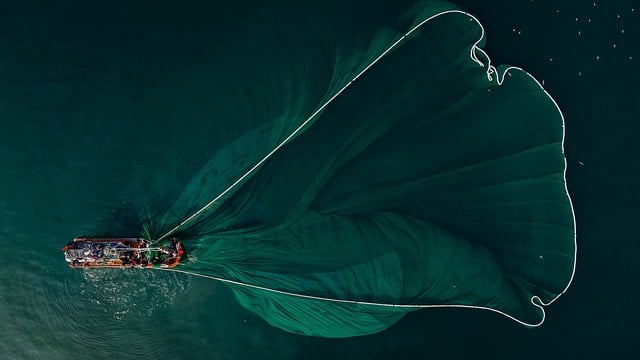
When the sun dips below the horizon, anglers relying on night fishing must rely heavily on artificial light to enhance their visibility and success. Proper illumination is paramount in this context, as it not only aids in spotting fish but also ensures safety on the water. Adequate lighting can reveal subtle details in the water’s surface that may indicate the presence of fish, allowing for precise casting and better fishing outcomes. Flashlights for fishing and boating serve as crucial tools for night anglers, offering both hands-free operation and directed beams that can penetrate the darkness effectively. The right flashlight, with its high-intensity output and durable design, becomes an indispensable companion on nocturnal angling expeditions. Moreover, these lighting solutions come in various configurations, including waterproof models, to withstand the elements and prolonged use, ensuring that anglers are well-equipped to tackle the challenges of night fishing. When selecting a flashlight for this purpose, consider models with adjustable intensity settings, which can conserve battery life during lulls and provide a bright, focused beam when needed. This versatility makes flashlights for fishing and boating not just a convenience but a critical piece of gear for any serious night angler.
Key Features to Look for in Flashlights for Fishing and Boating

When venturing out for night fishing or boating, having a reliable flashlight is not just a convenience—it’s an essential tool for safety and effectiveness. Flashlights for fishing and boating should prioritize durability and water resistance, as they are likely to face harsh marine environments. Look for flashlights that are constructed with high-quality materials such as aircraft-grade aluminum or stainless steel, which can withstand the corrosive effects of saltwater and resist slipping from wet surfaces.
In terms of lighting features, a high-output LED is crucial for casting a strong beam, particularly when illuminating distant objects or navigating through dark waters. A flashlight that offers multiple light modes—including a high, medium, and low setting—provides versatility. This allows anglers to conserve battery life on lower settings during extended trips or intensify the brightness when necessary, such as when tying knots or securing gear. Additionally, consider the beam type; a focused spotlight is ideal for long-distance visibility, while a floodlight setting offers a broader illumination for nearby tasks. Features like red or green filters can also enhance night vision and reduce glare in low-light conditions, ensuring a safer experience on the water. Always ensure that the flashlight you choose has a securely fastened lens to prevent damage if accidentally dropped. With these features in mind, you’ll be well-equipped to handle the unique demands of fishing and boating under the cover of darkness.
Top-Rated Flashlights for Anglers: A Comprehensive Review
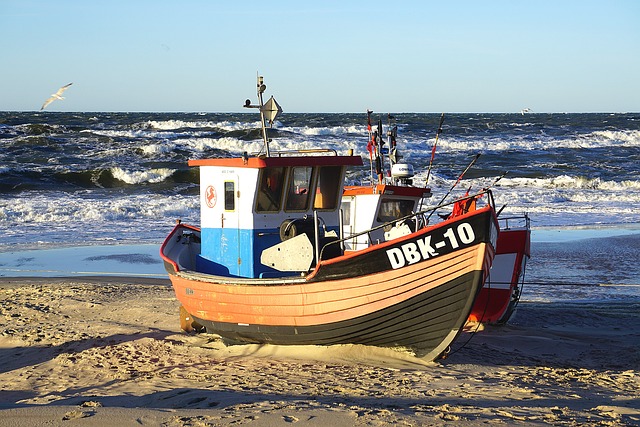
When embarking on a night fishing expedition, having a reliable flashlight is crucial for both safety and visibility. Anglers rely on high-quality flashlights for fishing and boating to navigate the dark waters, handle equipment, and attract fish. The market offers a plethora of top-rated flashlights designed specifically for anglers, each with unique features that cater to different needs. For those who prioritize brightness and longevity, models like the Fenix PD35 Tac are highly recommended, boasting a high lumen output and a durable aluminum body. The Fenix PD35 Tac is not only waterproof but also impact resistant, making it an ideal companion for the unpredictable conditions that can arise during night fishing trips. Another stellar option is the Streamlight ProTac HL-X Flashlight, which provides a balanced beam for close-range tasks and longer-distance illumination, essential for surveying the surrounding environment or enticing fish with its focused light. This flashlight is also constructed with durable materials, ensuring it can endure the rigors of outdoor use.
In addition to brightness and durability, anglers should consider the battery life and the beam type of their flashlights for fishing and boating. Models like the Olight S20 Baton offer a rechargeable lithium-ion battery with an impressive runtime, providing consistent lighting throughout the night without the need for frequent battery changes. The Olight S20 Baton’s compact design also allows for easy storage, while its magnetic tail cap and dual switches offer versatile operation, even when wearing fishing gloves. The beam type, whether flood or spot, is critical depending on the task at hand; a flood beam is ideal for illuminating a wide area, such as a boat deck, while a spot beam can focus light to attract fish or signal others from a distance. When selecting a flashlight, it’s important to balance these features with personal preferences and intended use cases to ensure the best possible experience on the water at night.
The Anatomy of a Quality Fishing Flashlight: Lumens, Beam Distance, and Durability

When embarking on a night fishing expedition, the right lighting can make all the difference between a successful catch and an unproductive outing. A high-quality fishing flashlight is not just a tool but an indispensable companion for anglers venturing into low-light conditions. The anatomy of such a flashlight encompasses several critical aspects: lumens, beam distance, and durability.
Lumens, the measure of total light output emitted by a lamp, are crucial in determining how bright your fishing flashlight will be. For fishing and boating scenarios, a flashlight with a high lumen output is beneficial for illuminating dark water surfaces or navigating through dimly lit areas. A flashlight offering at least several hundred lumens can effectively reveal fish movements underwater, while also enhancing visibility of the surrounding environment for safety and convenience.
Beam distance is another vital factor to consider in a fishing flashlight. The farther the beam can travel, the better it will be for spotting fish from afar or identifying objects in your vicinity. A long-range beam with a focused hotspot and a broad periphery is ideal for such activities. It allows anglers to pinpoint where exactly to cast their lines without the light being too harsh or blinding, which could spook the fish.
Durability is a non-negotiable quality for any fishing flashlight. Boats and docks can be rough environments, with potential exposure to water, dust, and impact. A flashlight that is built to withstand these conditions will have a sturdy construction, often with a waterproof rating such as IPX7 or IPX8, and impact resistance to ensure it remains operational even when dropped or submerged. Additionally, features like rubberized grips or a floating design can further enhance its practicality for fishing and boating situations.
Choosing a flashlight that excels in lumens, beam distance, and durability will not only aid in the enjoyment of your night fishing experience but also play a key role in safety, providing reliable illumination when navigating after dark. Flashlights For Fishing And Boating specifically designed with these attributes in mind are essential gear for any serious angler.
Strategies for Effective Night Fishing with the Help of a Flashlight
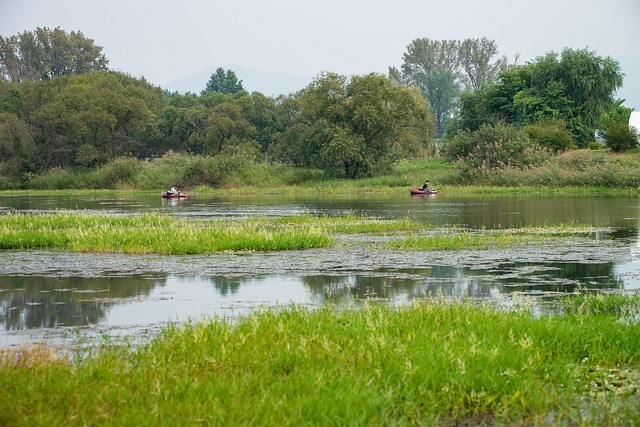
When the sun sets and the night takes over, anglers with a passion for fishing have the unique opportunity to target species that are more active under cover of darkness. To effectively engage in night fishing, a reliable source of light is crucial. Flashlights For Fishing And Boating serve as essential tools that enhance visibility and safety on the water. When selecting a flashlight, consider models with high lumen output and adjustable beam focus to illuminate both nearby areas and distant environments. A focused beam can be used to attract fish or to navigate through the dark, while a wider spread is useful for situational awareness around your fishing spot.
Incorporating a flashlight into your night fishing strategy involves more than just pointing it towards the water. For baitfish imitation, a flickering light can mimic the movements of injured fish, attracting predatory fish like bass or pike. Similarly, for species like catfish that are attracted to light, a steady light source can bring them close enough for effective casting and retrieval. It’s also important to use the flashlight responsibly: avoid blinding yourself or disturbing wildlife unnecessarily. Additionally, ensure that your flashlight is waterproof and has a sturdy construction to withstand the elements and the rough conditions often encountered during boating excursions. With the right flashlight in hand, night fishing can be a productive and rewarding experience, as long as you use it to complement your overall fishing technique.
Essential Safety Tips When Using Flashlights on the Water at Night
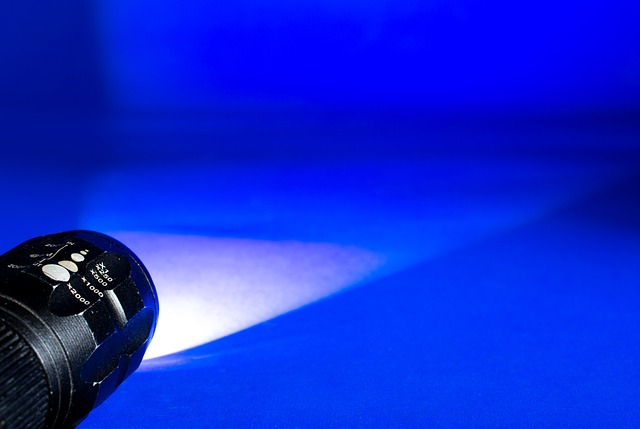
When embarking on a night fishing or boating excursion, ensuring your safety is paramount, especially when relying on flashlights for illumination. Firstly, select waterproof and durable flashlights designed specifically for fishing and boating. These models are built to withstand the elements and are often impact resistant, which can be crucial when navigating around a boat or shoreline in the dark. Secondly, always use LED lights as they offer a brighter and longer-lasting beam compared to traditional bulbs, which is essential for maintaining visibility of your surroundings and any catch you might reel in.
Investing in a flashlight with adjustable brightness settings allows for energy conservation and reduces the risk of accidentally blinding yourself or others. Additionally, it’s wise to carry extra batteries and have a backup light. A malfunctioning or dead flashlight can leave you in complete darkness, so redundancy here can be a safety net that could prevent a dangerous situation. To avoid accidental drops into the water, secure your flashlight with a lanyard or tether it to your person or the boat. Furthermore, always be mindful of the beam’s direction to avoid disorienting other anglers and to preserve your night vision.
Ensure that all members of your group are equipped with their own flashlights, which can help in coordinating tasks and ensuring everyone’s safety. Lastly, familiarize yourself with the operational aspects of your flashlight before darkness falls to avoid any confusion or fumbling that could lead to injury. By following these safety tips and utilizing flashlights for fishing and boating effectively, you can enhance both your experience and protection while enjoying the unique beauty of nighttime angling.
How to Choose the Right Type of Flashlight for Your Night Fishing Needs
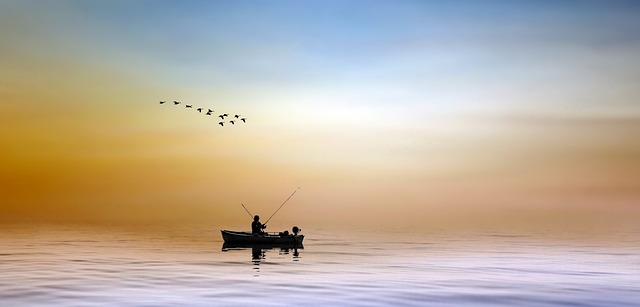
When embarking on a night fishing expedition, selecting the appropriate flashlight is paramount for both safety and effectiveness. Flashlights designed specifically for fishing and boating are tailored to provide ample illumination without disrupting the natural environment or the fishermen’s night vision. Consider models that offer adjustable brightness levels; this feature allows anglers to use a lower setting for general navigation without blinding themselves or their companions, and a higher setting for more precise tasks like untangling lines or inspecting catches.
The best flashlights for fishing and boating will have durable constructions to withstand the elements and are often waterproof and impact-resistant. Additionally, they should feature a reliable grip and be compact enough to not occupy valuable space on a boat or in a tackle box. Look for flashlights that offer a long battery life, as remote fishing spots may be far from power sources. LED technology is highly recommended due to its longevity and energy efficiency. Whether you’re targeting fish under the moonlight or navigating through the dark waters, the right flashlight will enhance your experience, ensuring visibility where it matters most.
Maintenance and Care: Keeping Your Fishing Flashlight in Peak Condition
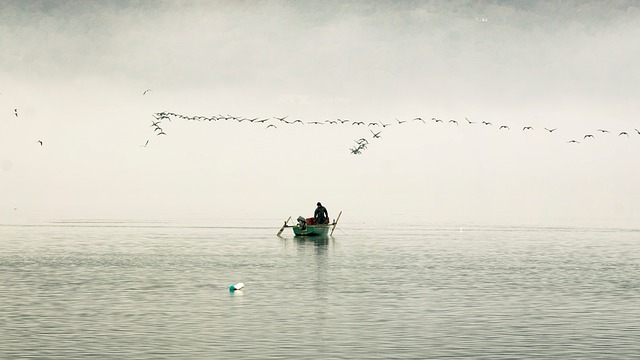
Regular maintenance and careful handling are key to keeping your fishing flashlight in optimal condition, especially when you rely on it for night fishing and boating excursions. To maintain peak performance, always begin by cleaning the lens regularly. Sand, salt, and grime can accumulate and diminish light output if not removed. Use a soft cloth to gently wipe down the exterior and a lukewarm, soapy solution to clean the glass, ensuring no residue is left behind. After cleaning, inspect the O-rings and seals for wear or damage; these components are crucial for maintaining waterproof integrity. Lubricate them with a suitable silicone grease if necessary.
Checking the battery compartment is equally important. Flashlights For Fishing And Boating should have a secure fit to prevent moisture ingress, which can corrode internal components and cause short circuits or reduced battery life. Before storing your flashlight after use, ensure it’s completely dry and the batteries are removed. This prevents long-term damage from condensation. Use fresh, high-quality batteries that match the manufacturer’s recommendations to guarantee consistent light output when you need it most. Regularly test your flashlight in a controlled environment to confirm its operation and replace any components that appear faulty or show signs of wear. Proper maintenance not only extends the lifespan of your fishing flashlight but also ensures you have a reliable source of light when navigating the dark waters at night.
When venturing into the nocturnal realm of night fishing, selecting a reliable flashlight for fishing and boating becomes paramount. This article has illuminated the critical aspects to consider when choosing a flashlight, from its lumen output and beam distance to its durability and safety features. The top-rated options have been thoroughly reviewed, ensuring anglers can select a light that meets their specific needs. Remember, the right fishing flashlight doesn’t just enhance visibility; it ensures safety and effectiveness on the water. By adhering to maintenance guidelines, your flashlight will remain a trustworthy companion under the stars. With these insights in hand, you are now well-equipped to navigate the night with confidence, turning darkness into an opportunity rather than an obstacle.


